Can You Build Your Own Bike? Absolutely, and at usabikers.net, we’re here to guide you through every step of creating a personalized motorcycle that reflects your unique style and preferences. Building your own motorcycle, or even customizing an existing one, offers unparalleled satisfaction and a deeper connection to the biker lifestyle. This detailed guide will explore the process of building your own bike, providing you with the knowledge and resources to get started.
1. Why Build Your Own Bike?
Building your own bike isn’t just about transportation; it’s about freedom, expression, and the thrill of crafting something unique. This detailed guide, brought to you by usabikers.net, will walk you through the entire process. This process allows you to customize every aspect of your ride, ensuring it perfectly matches your needs and preferences. Whether it’s a classic cruiser, a high-performance sportbike, or a rugged off-roader, building your own bike lets you tailor every detail. This includes the frame, engine, suspension, and aesthetics. This also gives you a sense of accomplishment and a deeper understanding of motorcycle mechanics, fostering a stronger connection with your machine and the open road.
1.1 What Are the Benefits of Building a Custom Motorcycle?
Building a custom motorcycle offers numerous advantages for passionate riders.
- Personalization: Tailor every aspect of your bike to your exact preferences, from performance to aesthetics.
- Cost Savings: Potentially save money by sourcing parts independently and avoiding dealership markups.
- Mechanical Knowledge: Gain hands-on experience and a deeper understanding of motorcycle mechanics.
- Uniqueness: Create a one-of-a-kind motorcycle that stands out from the crowd.
- Sense of Accomplishment: Experience the satisfaction of building something with your own hands.
- Improved Riding Experience: Optimize your bike for your specific riding style and needs, enhancing comfort and performance.
- Community and Camaraderie: Connect with other builders and enthusiasts, sharing knowledge and experiences.
For more inspiration and resources, visit usabikers.net and join our community of custom bike builders.
1.2 What Are the Disadvantages of Building a Custom Motorcycle?
While building a custom motorcycle can be rewarding, it also presents several challenges:
- Time Commitment: Building a bike from scratch requires a significant investment of time and effort.
- Technical Expertise: You’ll need a solid understanding of motorcycle mechanics, fabrication, and electrical systems.
- Tool Investment: Specialized tools and equipment can be expensive.
- Potential for Errors: Mistakes can be costly and time-consuming to correct.
- Safety Concerns: Improper assembly can lead to safety hazards and mechanical failures.
- Legal Compliance: Ensuring your custom build meets all local regulations and safety standards can be complex.
- Warranty Issues: Custom-built bikes typically don’t come with a warranty, leaving you responsible for repairs.
Despite these challenges, many enthusiasts find the rewards of building a custom bike outweigh the drawbacks. For support and guidance, check out usabikers.net.
2. Understanding Your Intentions
Before diving into the nuts and bolts, clarify your intentions. What kind of bike do you envision? What will its primary use be? Having a clear vision will guide your decisions and prevent costly detours. Let usabikers.net help you to refine your vision and navigate the complexities of your build.
2.1 What Are the Different Types of Motorcycles You Can Build?
The possibilities are nearly endless when it comes to custom motorcycle builds. Here are some popular styles to consider:
- Cruisers: Known for their laid-back riding position and classic aesthetics, cruisers are perfect for comfortable, long-distance rides.
- Choppers: Characterized by their extended front forks, minimalist design, and custom paint jobs, choppers are all about making a statement.
- Bobbers: Similar to choppers but with a more stripped-down, raw aesthetic, bobbers often feature solo seats and minimal bodywork.
- Cafe Racers: Designed for speed and agility, cafe racers typically have a sporty riding position, clip-on handlebars, and a minimalist fairing.
- Sportbikes: High-performance machines built for speed and handling, sportbikes often feature aerodynamic bodywork and powerful engines.
- Adventure Bikes: Rugged and versatile, adventure bikes are designed for both on-road and off-road riding, with features like long-travel suspension and durable construction.
- Dirt Bikes: Lightweight and agile, dirt bikes are built for off-road riding on trails, tracks, and challenging terrain.
- Track Bikes: Optimized for performance on closed courses, track bikes often feature upgraded suspension, brakes, and engines.
Each style requires different components and skills. To explore more options and gather ideas, visit usabikers.net.
2.2 What Are the Key Considerations When Choosing a Motorcycle Style?
Choosing the right motorcycle style for your custom build involves careful consideration of several factors:
- Riding Style: How do you plan to use the bike? Commuting, long-distance touring, off-road adventures, or track days?
- Budget: Different styles require different components and fabrication techniques, which can significantly impact the overall cost.
- Skill Level: Some styles, like sportbikes or dirt bikes, require advanced riding skills.
- Local Regulations: Ensure your chosen style complies with local laws and regulations regarding safety and modifications.
- Personal Preferences: Ultimately, the best style is the one that appeals to you the most, reflecting your personality and taste.
At usabikers.net, we offer resources and community support to help you make the right choice for your custom build.
3. Sourcing Your Parts
Finding the right parts is crucial. You can source parts from various places. This includes online retailers, swap meets, and salvage yards. Consider both new and used components. However, always prioritize quality and compatibility. Here’s how to navigate the options effectively:
3.1 Where Can You Find Motorcycle Frames for a Custom Build?
The frame is the foundation of your motorcycle. Choosing the right one is essential. Here are several sources for motorcycle frames:
- Online Retailers: Websites like eBay, Amazon, and specialty motorcycle parts suppliers offer a wide selection of frames, both new and used.
- Custom Frame Builders: Companies specializing in custom frames can create a frame to your exact specifications.
- Motorcycle Salvage Yards: Salvage yards often have a variety of used frames at lower prices, but inspect them carefully for damage.
- Swap Meets and Motorcycle Shows: These events are great places to find unique and hard-to-find frames.
- Local Fabricators: Local metal fabricators can build a custom frame from scratch, offering maximum personalization.
Remember to verify the frame’s condition, dimensions, and compatibility with your build plan. Usabikers.net provides a directory of trusted frame suppliers to help you find the perfect fit.
3.2 Where Can You Find Motorcycle Engines for a Custom Build?
The engine is the heart of your motorcycle. Finding a reliable and suitable engine is paramount. Consider these options:
- Online Retailers: Websites like eBay, Amazon, and motorcycle parts suppliers offer a range of new and used engines.
- Motorcycle Salvage Yards: Salvage yards often have engines from wrecked bikes at discounted prices, but inspect them carefully.
- Engine Rebuilders: Companies specializing in engine rebuilding can provide refurbished engines with warranties.
- Local Mechanics: Local motorcycle mechanics may have access to used engines or be able to source one for you.
- Motorcycle Shows and Swap Meets: These events can be great places to find rare or unique engines.
Ensure the engine you choose is compatible with your frame and meets your performance requirements. Check out usabikers.net for engine specifications and advice.
3.3 Where Can You Find Motorcycle Parts for a Custom Build?
Sourcing individual parts can be a treasure hunt. Here are some places to look for motorcycle parts:
- Online Retailers: Websites like RevZilla, J&P Cycles, and Amazon offer a vast selection of motorcycle parts, from basic components to specialized accessories.
- Motorcycle Salvage Yards: Salvage yards are great places to find used parts at lower prices, but inspect them carefully for wear and damage.
- Local Motorcycle Shops: Local shops can provide expert advice and may have access to parts not available online.
- Swap Meets and Motorcycle Shows: These events are ideal for finding rare or unique parts and connecting with other enthusiasts.
- Online Forums and Communities: Online forums and communities like usabikers.net often have classifieds sections where members sell parts.
Always prioritize quality and compatibility when sourcing parts. Use our forums at usabikers.net to connect with other builders and find reliable sources.
3.4 What Are the Essential Tools Needed to Build a Bike?
Building a bike requires the right tools to ensure precision, safety, and efficiency. Here’s a list of essential tools you’ll need:
- Metric Socket Set: Essential for tightening and loosening nuts and bolts of various sizes.
- Wrench Set: Open-end and box-end wrenches are necessary for various tasks.
- Screwdriver Set: Both Phillips head and flathead screwdrivers in multiple sizes.
- Torque Wrench: Crucial for tightening bolts to the manufacturer’s specified torque.
- Pliers: Including needle-nose, slip-joint, and locking pliers for gripping and manipulating parts.
- Hammers: A rubber mallet and ball-peen hammer for different tasks.
- Allen Wrench Set: For working with Allen head bolts.
- Wire Strippers and Crimpers: Essential for electrical work.
- Multimeter: For testing electrical circuits and components.
- Welder: If you plan to do any frame modifications or custom fabrication.
- Grinder: For cutting, shaping, and finishing metal parts.
- Drill: With a set of drill bits for making holes.
- Files and Sandpaper: For smoothing and finishing surfaces.
- Measuring Tools: Including a tape measure, calipers, and a level.
- Bike Stand: To keep the bike stable during assembly.
- Grease Gun: For lubricating bearings and joints.
- Specialty Tools: Such as a chain breaker, valve spring compressor, and bearing puller, depending on your specific build.
Investing in quality tools will make the build process smoother and more enjoyable. Usabikers.net offers tool guides and recommendations to help you choose the best equipment for your needs.
4. The Assembly Process
With your parts gathered, it’s time to start assembly. This is where your mechanical skills will be put to the test. Take your time, follow a logical sequence, and don’t hesitate to seek guidance when needed. Usabikers.net offers step-by-step guides and video tutorials to assist you.
4.1 What Are the Key Steps in Assembling a Motorcycle?
Assembling a motorcycle involves several key steps that need to be followed in a logical sequence:
- Frame Preparation: Clean and inspect the frame, ensuring it’s free of damage and ready for assembly.
- Engine Installation: Mount the engine into the frame, ensuring proper alignment and secure attachment.
- Suspension Installation: Install the front forks and rear shocks, adjusting them to the desired settings.
- Wheel Installation: Mount the wheels onto the frame, ensuring proper alignment and secure attachment.
- Brake System Installation: Install the brake calipers, rotors, and lines, ensuring proper function and bleeding.
- Drivetrain Installation: Install the chain or belt, sprockets or pulleys, and adjust the tension.
- Electrical System Installation: Wire the electrical components, including the battery, lights, and ignition system.
- Fuel System Installation: Install the fuel tank, fuel lines, and carburetor or fuel injection system.
- Controls Installation: Install the handlebars, levers, and cables, ensuring smooth and responsive operation.
- Bodywork Installation: Attach the fenders, side panels, and other body components.
- Final Adjustments: Make any necessary adjustments to the suspension, brakes, and drivetrain.
- Test Ride: Conduct a test ride in a controlled environment to ensure everything is working correctly.
Each step requires careful attention to detail. Usabikers.net provides detailed guides and checklists to help you through the process.
4.2 How Do You Install the Engine in a Custom Motorcycle Build?
Installing the engine is a critical step in building a custom motorcycle. Here’s a detailed guide:
- Preparation: Ensure the frame is clean and ready to accept the engine.
- Mounting Hardware: Gather the necessary bolts, nuts, and washers.
- Engine Positioning: Carefully lift the engine into the frame, aligning the mounting points.
- Secure Attachment: Bolt the engine to the frame, using the correct torque specifications.
- Alignment Check: Ensure the engine is properly aligned within the frame.
- Connections: Connect the fuel lines, electrical wires, and exhaust system.
- Final Inspection: Double-check all connections and mounting points.
Proper engine installation ensures reliable performance and prevents potential damage. Usabikers.net offers specific engine installation guides for various motorcycle models.
4.3 How Do You Wire the Electrical System in a Custom Motorcycle Build?
Wiring the electrical system can seem daunting. Here’s how to approach it systematically:
- Plan: Create a wiring diagram to map out all connections.
- Components: Gather all necessary components, including the battery, lights, and ignition system.
- Wiring: Run the wires, following the wiring diagram and using appropriate connectors.
- Connections: Connect the wires to the components, ensuring secure and correct connections.
- Testing: Test the circuits with a multimeter to ensure proper function.
- Insulation: Insulate the wires to protect them from damage and short circuits.
- Final Check: Double-check all connections and wiring before starting the engine.
Proper wiring ensures reliable electrical function and prevents potential hazards. Usabikers.net offers wiring diagrams and troubleshooting tips to help you through the process.
5. Customization and Personalization
This is where your creativity can shine. Customize your bike to reflect your personal style and preferences. This could include custom paint jobs, unique bodywork, or aftermarket accessories. Usabikers.net showcases inspiring custom builds and offers advice on achieving your desired look.
5.1 What Are Some Popular Custom Motorcycle Modifications?
Customizing a motorcycle is a way to express your individuality and enhance your riding experience. Here are some popular modifications:
- Custom Paint Jobs: A unique paint scheme can transform the look of your bike.
- Bodywork Modifications: Altering the fenders, tank, and side panels can create a distinctive style.
- Seat Upgrades: Custom seats can improve comfort and aesthetics.
- Handlebar and Control Upgrades: Changing the handlebars, grips, and levers can enhance comfort and control.
- Exhaust System Upgrades: Aftermarket exhaust systems can improve performance and sound.
- Lighting Upgrades: LED lights, custom headlights, and taillights can improve visibility and style.
- Wheel Upgrades: Custom wheels can enhance the look and performance of your bike.
- Engine Modifications: Upgrading the engine components can increase power and torque.
Each modification can significantly impact the look and feel of your bike. Usabikers.net features articles and guides on various custom modifications to inspire your build.
5.2 How Do You Choose the Right Custom Paint Job for Your Bike?
The paint job is one of the most visible aspects of a custom motorcycle. Here’s how to choose the right one:
- Research: Look at different paint schemes and styles for inspiration.
- Color Selection: Choose colors that reflect your personality and complement the bike’s design.
- Design: Create a design that is both visually appealing and unique.
- Professional Painter: Hire a professional painter with experience in motorcycle paint jobs.
- Quality Materials: Use high-quality paints and clear coats for a durable finish.
- Preparation: Ensure the surface is properly prepared before painting.
A well-executed paint job can transform your bike into a rolling work of art. Usabikers.net offers advice and resources to help you find the perfect paint scheme.
5.3 How Do You Upgrade the Performance of Your Custom Motorcycle?
Upgrading the performance of your motorcycle can enhance the riding experience and unleash its full potential. Here are some common upgrades:
- Engine Modifications: Upgrading the engine components can increase power and torque.
- Exhaust System: An aftermarket exhaust system can improve exhaust flow and increase horsepower.
- Air Intake: Upgrading the air intake can improve airflow to the engine.
- Fuel Management: A fuel management system can optimize fuel delivery for improved performance.
- Suspension Upgrades: Upgrading the suspension can improve handling and ride quality.
- Brake Upgrades: Upgrading the brakes can improve stopping power and safety.
- Tire Upgrades: High-performance tires can improve traction and handling.
Each upgrade can significantly impact the performance of your bike. Usabikers.net offers detailed guides and recommendations for performance upgrades.
6. Safety and Legal Considerations
Safety should always be a top priority. Ensure your bike meets all local regulations and safety standards. This includes proper lighting, brakes, and tires. It’s also wise to invest in quality safety gear, such as a helmet, jacket, and gloves. Usabikers.net provides information on motorcycle safety and legal requirements.
6.1 What Are the Safety Requirements for Custom Motorcycles?
Safety is paramount when building a custom motorcycle. Here are some essential safety requirements:
- Brakes: Ensure the brakes are in good working order and meet local standards.
- Lighting: Install proper headlights, taillights, and turn signals.
- Tires: Use tires that are properly sized and rated for the bike.
- Suspension: Ensure the suspension is properly adjusted and in good working order.
- Frame: Inspect the frame for damage and ensure it is structurally sound.
- Exhaust: Ensure the exhaust system meets noise regulations and is properly installed.
- Mirrors: Install mirrors that provide adequate visibility.
- Horn: Ensure the horn is functional.
Meeting these safety requirements helps ensure a safe riding experience. Usabikers.net provides resources and information on motorcycle safety regulations.
6.2 What Are the Legal Requirements for Registering a Custom Motorcycle?
Registering a custom motorcycle involves meeting certain legal requirements. Here are some key considerations:
- Inspection: The bike may need to pass a safety inspection.
- Title: You’ll need a title or bill of sale for the frame and engine.
- Insurance: Obtain motorcycle insurance.
- Registration: Register the bike with the local DMV.
- Compliance: Ensure the bike meets all local regulations and safety standards.
Navigating the legal requirements can be complex. Usabikers.net provides information on motorcycle registration and legal compliance.
6.3 What Safety Gear Should You Invest In?
Investing in quality safety gear is essential for protecting yourself while riding. Here are some must-have items:
- Helmet: A DOT-approved helmet is the most important piece of safety gear.
- Jacket: A motorcycle jacket provides protection from abrasion and impact.
- Gloves: Motorcycle gloves protect your hands and improve grip.
- Pants: Motorcycle pants provide protection for your legs.
- Boots: Motorcycle boots protect your feet and ankles.
- Eye Protection: Goggles or a face shield protect your eyes from debris and wind.
- Ear Protection: Earplugs can reduce wind noise and prevent hearing damage.
Wearing proper safety gear can significantly reduce the risk of injury in a crash. Usabikers.net provides safety gear recommendations and reviews to help you choose the best equipment.
7. Maintaining Your Custom Bike
Building a bike is just the beginning. Regular maintenance is essential to keep your custom motorcycle running smoothly and reliably. This includes routine inspections, fluid changes, and component replacements. Usabikers.net offers maintenance tips and schedules to help you keep your bike in top condition.
7.1 What Are the Essential Maintenance Tasks for a Motorcycle?
Regular maintenance is crucial for keeping your motorcycle in top condition. Here are some essential tasks:
- Oil Change: Change the engine oil and filter at recommended intervals.
- Chain Lubrication: Lubricate the chain regularly to prevent wear.
- Tire Inspection: Check the tire pressure and tread depth regularly.
- Brake Inspection: Inspect the brake pads, rotors, and lines for wear and damage.
- Fluid Checks: Check the levels of coolant, brake fluid, and clutch fluid.
- Battery Maintenance: Keep the battery terminals clean and check the voltage.
- Air Filter Cleaning: Clean or replace the air filter regularly.
- Spark Plug Replacement: Replace the spark plugs at recommended intervals.
Performing these maintenance tasks helps ensure reliable performance and prolongs the life of your motorcycle. Usabikers.net provides detailed maintenance schedules and guides.
7.2 How Often Should You Perform Maintenance on Your Motorcycle?
The frequency of maintenance tasks depends on several factors, including the type of bike, riding conditions, and manufacturer’s recommendations. Here are some general guidelines:
- Oil Change: Every 3,000 to 5,000 miles.
- Chain Lubrication: Every 300 to 500 miles.
- Tire Inspection: Before each ride.
- Brake Inspection: Every 1,000 miles.
- Fluid Checks: Every 500 miles.
- Battery Maintenance: Monthly.
- Air Filter Cleaning: Every 3,000 miles.
- Spark Plug Replacement: Every 10,000 miles.
Following these guidelines helps ensure your motorcycle remains in good working order. Usabikers.net provides customizable maintenance checklists to help you stay organized.
7.3 What Are Some Common Motorcycle Problems and How Do You Fix Them?
Even with regular maintenance, motorcycles can experience problems. Here are some common issues and their solutions:
- Flat Tire: Replace or repair the tire.
- Dead Battery: Charge or replace the battery.
- Chain Issues: Adjust or replace the chain.
- Brake Problems: Replace brake pads or bleed the brakes.
- Engine Problems: Diagnose and repair the engine.
- Electrical Problems: Troubleshoot and repair the electrical system.
Addressing these problems promptly helps prevent further damage. Usabikers.net provides troubleshooting guides and repair tips to help you resolve common motorcycle issues.
8. Finding Inspiration and Community
Building a custom bike is a journey best shared. Connect with other builders, share ideas, and find inspiration from the custom motorcycle community. Usabikers.net hosts forums, galleries, and events where you can connect with fellow enthusiasts and showcase your build.
8.1 Where Can You Find Inspiration for Your Custom Motorcycle Build?
Finding inspiration is key to creating a unique and personalized motorcycle. Here are some sources:
- Motorcycle Shows: Attend local and national motorcycle shows.
- Online Forums: Browse online forums and communities.
- Custom Bike Builders: Follow custom bike builders on social media.
- Magazines: Read motorcycle magazines.
- Online Galleries: Explore online galleries of custom bikes.
- Social Media: Use social media platforms like Instagram and Pinterest to discover unique builds.
These resources can provide endless ideas and inspiration for your custom motorcycle build. Usabikers.net features a gallery of custom builds and a directory of custom bike builders to help you get started.
8.2 How Can You Connect with Other Motorcycle Enthusiasts?
Connecting with other motorcycle enthusiasts can enrich your building experience and provide valuable support. Here are some ways to connect:
- Online Forums: Join online forums and communities like usabikers.net.
- Motorcycle Clubs: Join a local motorcycle club.
- Events: Attend motorcycle rallies and events.
- Social Media: Connect with other enthusiasts on social media.
- Local Shops: Visit local motorcycle shops and connect with mechanics and other riders.
Connecting with other enthusiasts can provide valuable support and inspiration. Usabikers.net hosts forums and events where you can connect with fellow builders and riders.
8.3 How Can You Showcase Your Custom Motorcycle Build?
Showcasing your custom motorcycle build is a great way to share your passion and inspire others. Here are some ways to showcase your bike:
- Motorcycle Shows: Enter your bike in motorcycle shows.
- Online Forums: Share your build on online forums and communities.
- Social Media: Post photos and videos of your bike on social media.
- Local Events: Display your bike at local events.
- Online Galleries: Submit photos of your bike to online galleries.
Showcasing your build can inspire others and bring recognition to your hard work. Usabikers.net features a gallery where you can submit photos of your custom motorcycle build.
9. FAQ About Building Your Own Bike
9.1 Is Building Your Own Bike Cheaper Than Buying One?
Building your own bike can sometimes be cheaper than buying a new one, but it depends on various factors, including the cost of parts, the complexity of the build, and your skill level.
9.2 How Long Does It Take to Build a Bike from Scratch?
The time it takes to build a bike from scratch can vary widely, depending on the complexity of the build, your skill level, and the availability of parts.
9.3 What Are the Best Resources for Learning About Motorcycle Mechanics?
There are many resources for learning about motorcycle mechanics, including online forums, books, and training courses.
9.4 Can I Build a Custom Bike If I Have No Mechanical Experience?
Building a custom bike with no mechanical experience is possible, but it will require a significant investment of time and effort to learn the necessary skills.
9.5 What Are the Most Common Mistakes to Avoid When Building a Bike?
Common mistakes to avoid when building a bike include improper planning, using incompatible parts, and neglecting safety requirements.
9.6 Do I Need Special Tools to Build a Bike?
Yes, building a bike requires a variety of specialized tools, including wrenches, sockets, and torque wrenches.
9.7 How Do I Ensure My Custom Bike Is Safe to Ride?
Ensuring your custom bike is safe to ride involves following all safety requirements, using quality parts, and conducting thorough inspections.
9.8 What Are the Legal Requirements for Operating a Custom-Built Motorcycle?
Legal requirements for operating a custom-built motorcycle include registration, insurance, and compliance with local safety standards.
9.9 Where Can I Find a Community of Custom Bike Builders?
You can find a community of custom bike builders on online forums, at motorcycle events, and through local motorcycle clubs.
9.10 How Do I Choose the Right Engine for My Custom Bike Project?
Choosing the right engine for your custom bike project depends on factors such as the type of bike, your performance goals, and your budget.
10. Conclusion
Building your own bike is a rewarding journey that combines creativity, mechanical skill, and a passion for motorcycles. While it may seem daunting at first, with careful planning, the right resources, and a willingness to learn, you can create a unique machine that reflects your personal style and preferences.
Visit usabikers.net today to explore our extensive collection of articles, guides, and resources. Join our vibrant community of motorcycle enthusiasts, share your experiences, and find the support you need to bring your dream build to life. Whether you’re a seasoned builder or a first-timer, usabikers.net is your ultimate destination for all things custom motorcycles.
Address: 801 Sturgis Main St, Sturgis, SD 57785, United States.
Phone: +1 (605) 347-2000.
Website: usabikers.net.
Call to Action:
Ready to start your custom motorcycle journey? Visit usabikers.net now to explore our vast collection of articles, guides, and resources. Join our community, share your experiences, and find the support you need to bring your dream build to life. Don’t wait – start building your dream bike today.
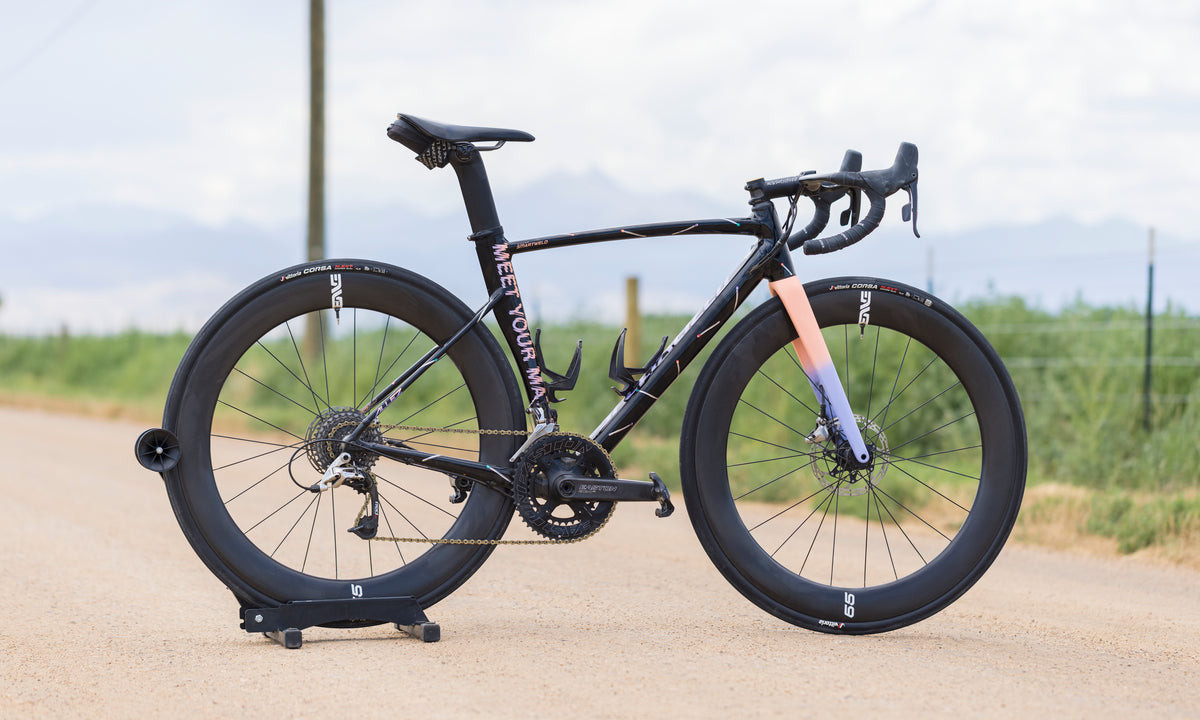 Specialized Allez Sprint
Specialized Allez Sprint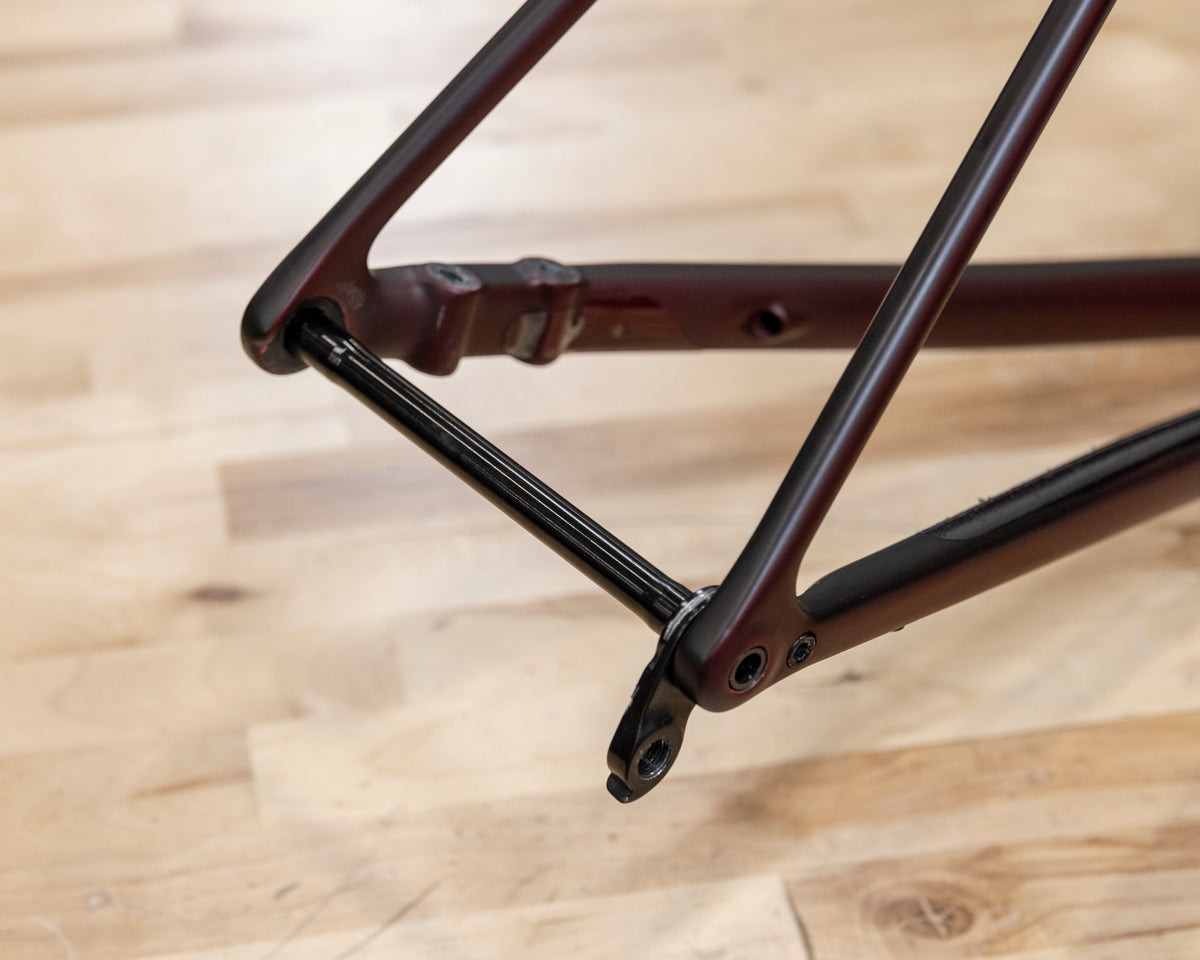 Build your own bike frame rear dropout spacing
Build your own bike frame rear dropout spacing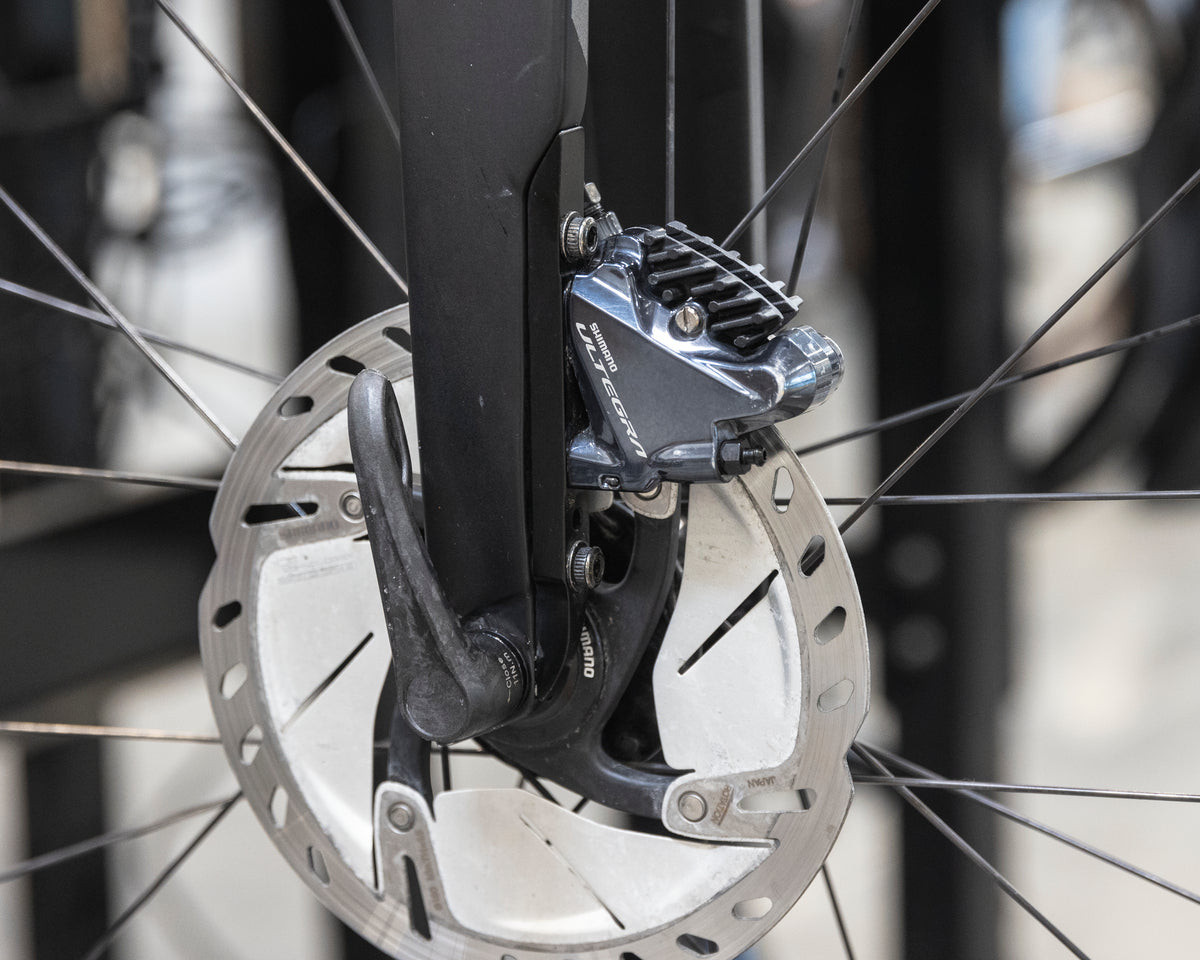 How to build your own bike frame disc brake mounts
How to build your own bike frame disc brake mounts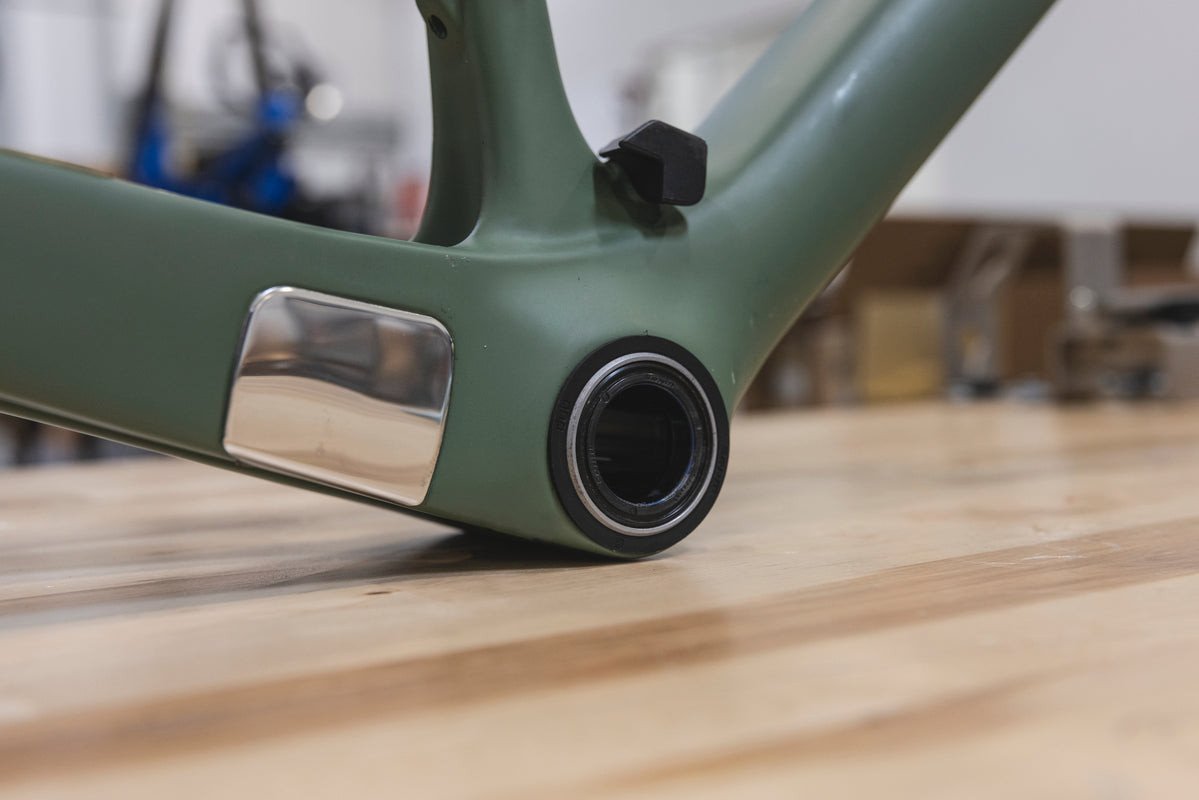 How to build your own bike bottom bracket standards
How to build your own bike bottom bracket standards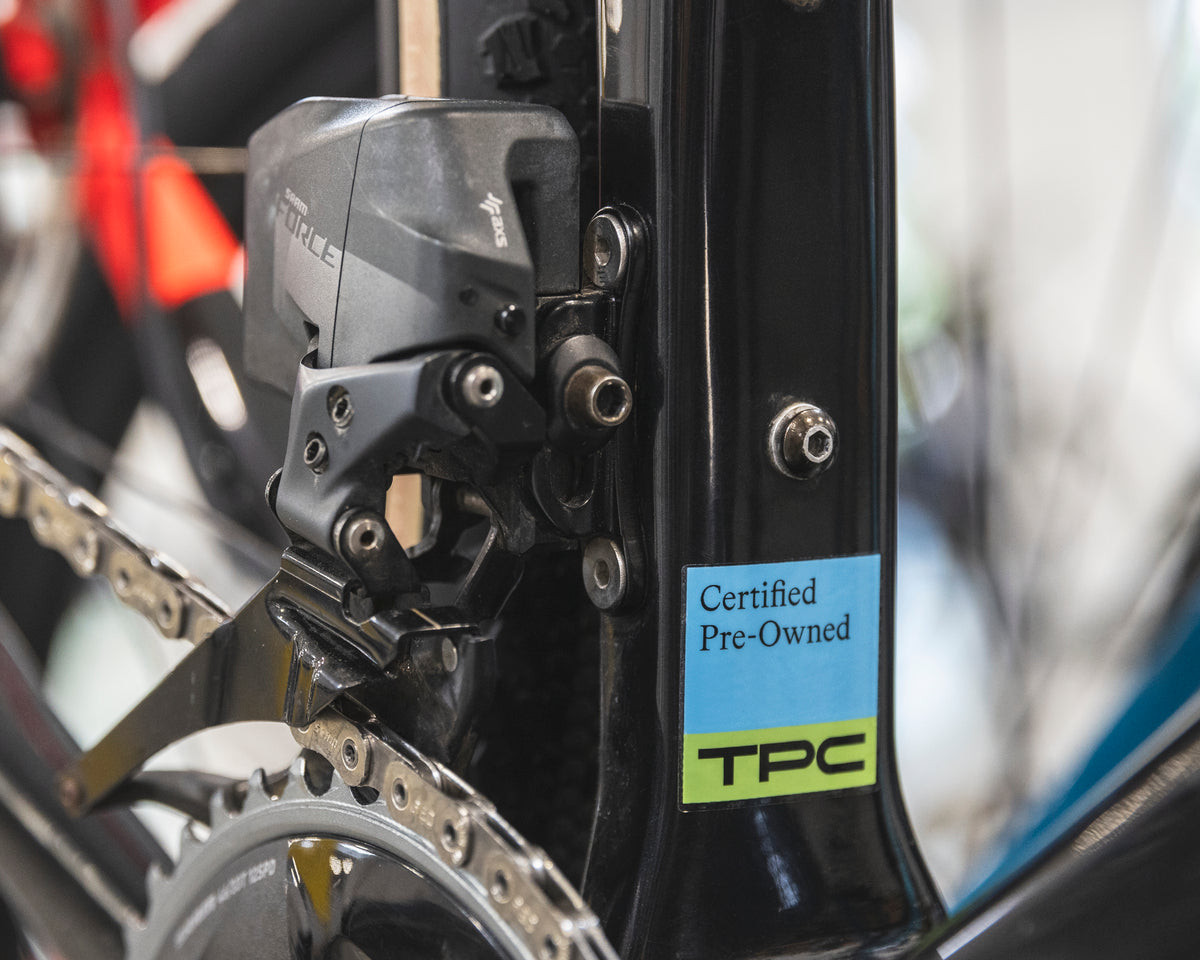 How to build your own bike front derailleur mount
How to build your own bike front derailleur mount How to build your own bike frame seatpost diameter
How to build your own bike frame seatpost diameter
